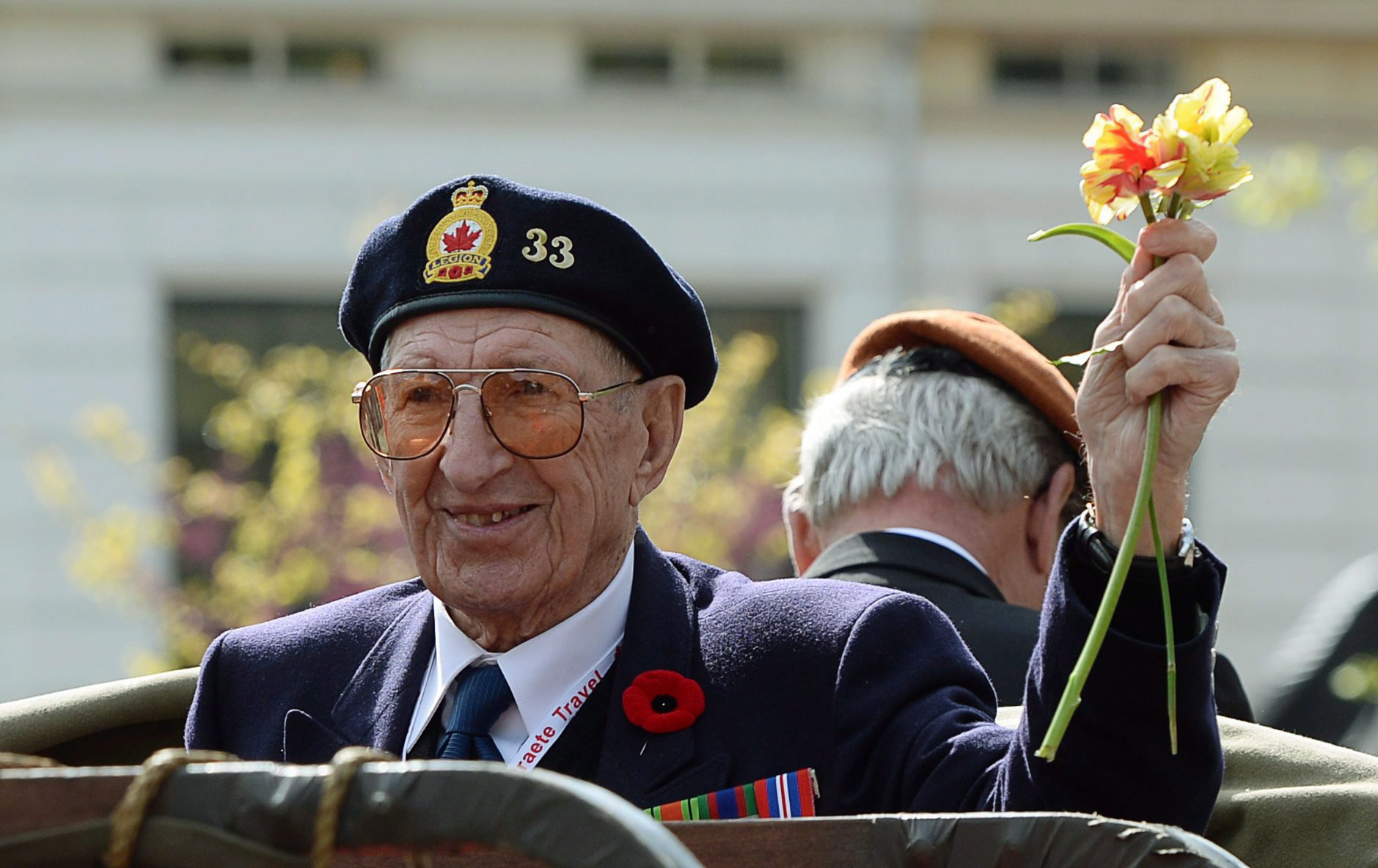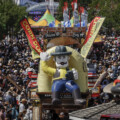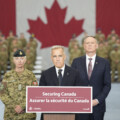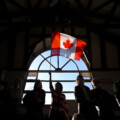Canadians will forever mark Victory in Europe Day.
Eighty years ago on May 8, 1945, the survivors of the long, terrible, and necessary Second World War let loose in a frenzy of celebration with victory over Nazi Germany.
From 1939 to 1945, Canada rose to be a consequential ally to Britain and the United States, with 1.1 million of its citizens serving in uniform and about double that number of men and women working in support of the war effort at home. The mines, farms, and factories supplied critical minerals, food, and weapons to help win the war against the fascists, militarists, and Nazis.
The Royal Canadian Navy and the Royal Canadian Air Force fought on multiple fronts, beating back the enemy, but after nearly a year of relentless battle from D-Day, June 6, 1944, Canada’s army ended that stage of the war by liberating large parts of eastern and northern Netherlands.
Nazi-occupied Netherlands
The Dutch people had suffered terribly under the Nazi occupiers who had pillaged their country. Driven by an evil racial ideology, the Nazis rounded up Jews for the death camps, including Anne Frank, who was one of 104,000 Dutch Jews murdered. Only 16,000 survived the Holocaust.
No one was safe. Dutch men were grabbed off the street and sent to slave labour camps, where they worked and died under appalling conditions. For the rest of the population, starting in late 1944 after the Dutch rose up to fight back, the Nazis turned food into a weapon, denying it to civilians. Thousands of elderly and young people died from starvation.
The southern part of the country was freed in a series of intense battles, with the First Canadian Army spearheading many of them. However, logistics and supplies were stretched, and so half of the Netherlands—about 4.5 million people—were left trapped under Nazi occupation and subjected to wanton cruelty.
“Hunger gnawed us,” remembered Johanna Lemke, a young girl during the occupation.
Liberation
These were the anguished people whom the Canadians began to liberate in early April 1945. On the verge of mass death, the Canadians advanced on a wide front, in a race against time. Ahead, the Dutch resistance assisted with sharing intelligence with their approaching liberators. Some towns and villages were captured rapidly; others were defended by German soldiers and Dutch traitors who joined their overlords fighting to the bitter end, at least before Hitler committed suicide on April 30, 1945.
“I saw a tank in the distance, with one soldier’s head above it, and the blood drained out of my body, and I thought: Here comes liberation.” So recounted a Dutch teenager who witnessed the arrival of Canadian soldiers in the Hague in early May 1945.
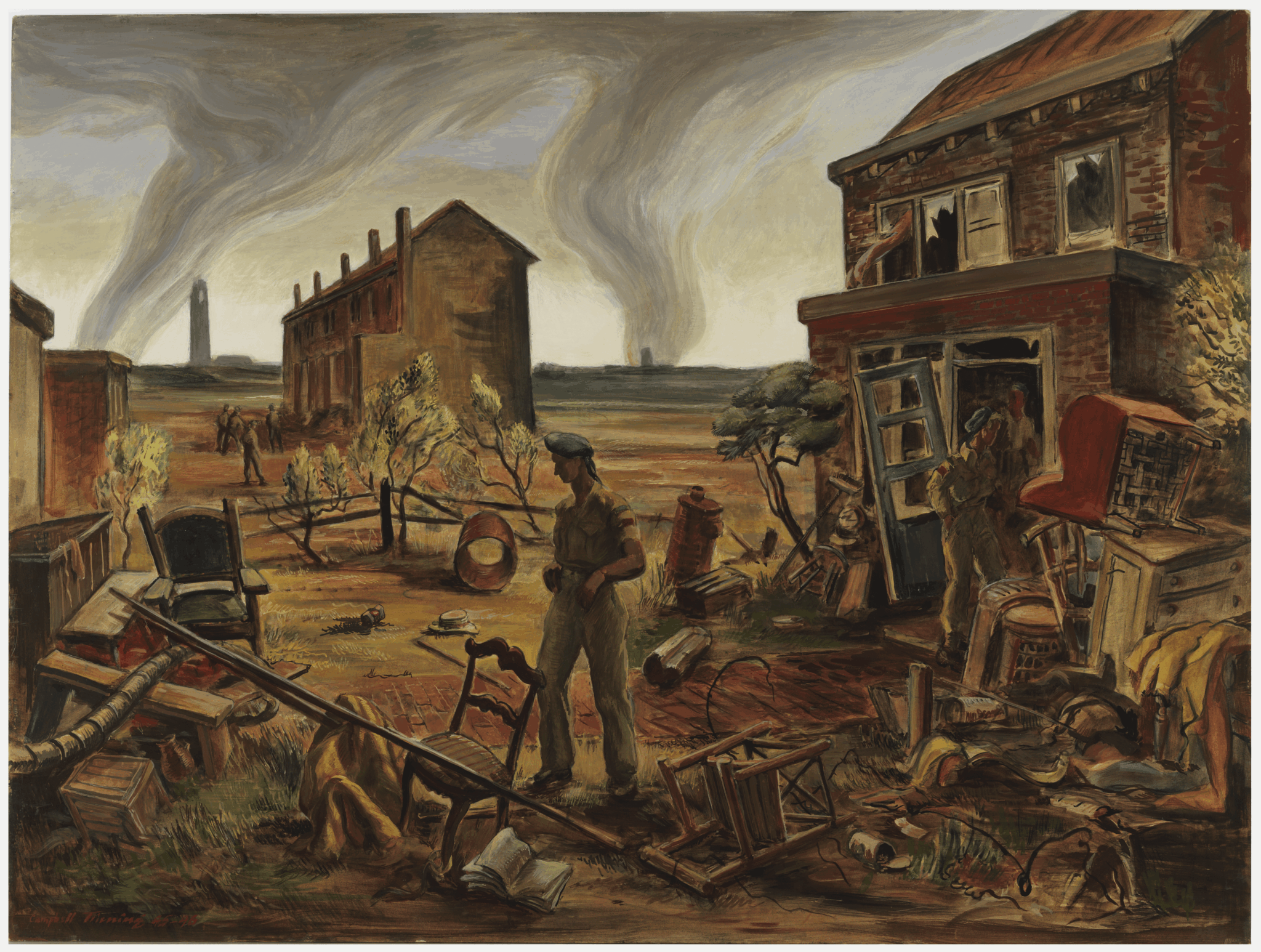
Campbell Tinning
Spring in Arnhem, Holland, 1945
CWM 19710261-5582
Beaverbrook Collection of War Art
Canadian War Museum
The liberated wept for freedom, aware that the arrival of the battle-scarred Canadians meant an end to the terror.
“There were tears of joy,” recounted George A. Morasch, who served with the Calgary Highlanders and was interviewed by the Canadian War Museum as part of the In Their Own Voices oral history project. “They cried and cried and cried.”
Behind the sharp-end forces came army trucks carrying supplies. Above the battlefield, the Royal Canadian Air Force dropped food for the desperate and famished people in the countryside.
When the Germans finally surrendered after five years of occupying the Netherlands, the Canadians pivoted fully from fighting to distributing food, aid, and medical attention.
When the guns fell silent
The crisis was eased by the end of May.
Eventually, some 170,000 Canadians were stationed in the Netherlands. Over the summer, the Canadians and Dutch became fast friends.
Entire families were adopted by the Canadian soldiers and fed. Men gave away their prized cigarettes. Children feasted on chocolate bars. They tasted like freedom.
Canadian soldiers and Dutch women formed friendships, engaged in furious affairs, and found everlasting love. But not all Canadians acted honourably, with some abandoning pregnant girlfriends. However, almost 2,000 Dutch women would marry Canadian soldiers and start new lives in Canada.
Beginning in 1947, tens of thousands of Dutch immigrants left war-scarred Holland for a better future in a country that was deeply associated with their liberation.
The legacy
Today, more than 1.1 million Dutch Canadians have intense links to this dark history. They help to keep alive its relevance in contemporary Canada.
From 1944 and 1945, at least 7,600 Canadians died in the liberation of the Netherlands. Most were buried in newly-built cemeteries, with the largest at Groesbeek, Adegen, Bergen-op-Zoom, and Holten. Soon, Dutch children were taught to lay flowers on the headstones, a custom that continues to this day. Their families welcomed Canadians over the coming decades who sought to make a pilgrimage to see the grave of a slain husband, son, or brother.
There was never a shortage of thanks for the Canadians, including from the Dutch royal family that sent one hundred thousand tulip bulbs to Canada in late 1945. It was a gesture of appreciation for sheltering part of the family in Ottawa during the war. The tulips kept coming, and each year they grew in many cities, living memorials of freedom.

Veterans take part in a parade to celebrate the 70th anniversary of the Liberation of the Netherlands in Wageningen, Netherlands on Tuesday, May 5, 2015. Sean Kilpatrick/The Canadian Press.
Symbols like the tulip, the care of soldiers’ graves, next-of-kin pilgrimages, monument building, and other acts of cultural diplomacy have anchored the war and VE Day in the collective memory of both countries.
While the Dutch liberation is a key focal point of commemoration because it came at the end of a long war, it does not encompass the sacrifices Canadians in uniform made elsewhere across the globe. Canadians served in multiple theatres of war, also freeing the French, Belgians, and even parts of Italy.
All countries embrace martial symbols: think of the way that narratives surround Stalingrad, Gettysburg, the Battle of Britain, or other turning point campaigns and clashes of arms. For Canada, the Dutch liberation is a key moment in the Second World War, much like the Battle of Vimy Ridge is remembered as a nation-building event in the First World War.
Remembrance
But symbols only matter if they continue to resonate from generation to generation.
We will see this history once again pulse in the coming days, as Canadians return to the Netherlands to honour the 80th anniversary of the end of the war in Europe and the liberation of the Dutch. Several formal ceremonies will be held in the cemeteries where Canadians have lain for eight decades under the symbol of the maple leaf carved into their headstones.
Some of the Canadians in the Netherlands will be the descendants of veterans, seeking to reconnect with family history. Others will be students who have paid their own way to better appreciate Canada’s impact in the world. Many will be Canadians who recognize the value of understanding our military history.
In 2025, almost all the veterans are gone now, but a handful have planned to be there.
Their presence will be all the more meaningful at a time when Canada is under threat from our closest ally. President Trump’s barrage of insults, brazen offers to join the republic as the 51st state, and threats of annexation through economic force have brought Canadians together, united in their determination to remain free citizens of a sovereign country.
One way to support and sustain Canada as a nation is to encourage greater awareness of our history. We need to remind ourselves of who we are, what we have achieved, and what we can do together in the future.
This is our story. We can’t expect the Americans, the French, or the British to tell it for us. It is up to all of us.
VE Day encompasses more than the liberation of the Dutch. Eighty years ago, Canadians stood with their allies in a war of utter necessity to fight fascism, to liberate the oppressed, and to do something hard together. There can be dangers in mapping the past onto the present, but this is a history that continues to resonate with Canadians, partially because millions are directly linked through a father or a mother, a grandfather or a grandmother, who served in the war.
VE Day saw Canadians unleash great passions when the war against the Nazis was finally over—with the conflict against Japan ending three months later—but not for all. The families of the 45,000 slain Canadians grieved their sons, fathers, and husbands who would never have an opportunity to contribute to the postwar country they had helped to defend. The victory had come at a terrible cost.
